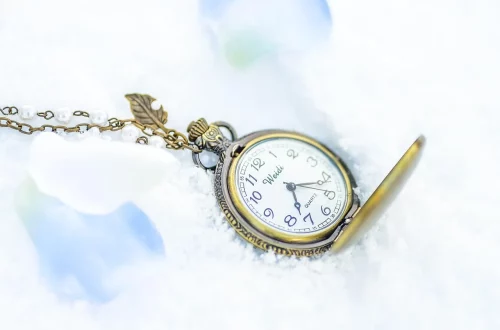
Empowering Voices: The Impact of Renaissance Women’s Groups
In recent years, there has been a significant resurgence in the interest surrounding women’s groups, particularly those that emerged during the Renaissance. This period marked a transformative time in history, characterized by advancements in art, science, and philosophy. However, it also served as a pivotal moment for women’s voices to be heard, as they sought to carve out their own spaces within a largely male-dominated society.
The Renaissance was not just a time for great artistic achievements; it was also an era when women began to assert their identities and express their thoughts and feelings more openly. Through various forms of literature, art, and social gatherings, women began to challenge traditional norms and expectations. They formed networks that allowed them to share their experiences, ideas, and aspirations, fostering a sense of community and empowerment.
This empowerment was not merely a personal journey but a collective one that would influence future generations. The impact of these women’s groups can still be felt today, as they laid the groundwork for the ongoing fight for gender equality and the celebration of women’s contributions to society. The legacy of their courage and determination continues to inspire women across the globe, reminding us of the importance of solidarity and the power of collective voices.
The Formation of Women’s Groups in the Renaissance
The Renaissance was marked by a flourishing of cultural, artistic, and intellectual pursuits, which created an environment ripe for the formation of women’s groups. Women began to gather in salons and private homes, creating spaces where they could discuss literature, philosophy, and the arts. These gatherings were often hosted by influential women who sought to elevate discussions and provide a platform for other women to share their insights.
One notable aspect of these groups was their diversity. Women from various social, economic, and educational backgrounds came together, each bringing unique perspectives and experiences. This inclusivity allowed for richer discussions and a broader understanding of the challenges women faced in society. They exchanged ideas and knowledge, often leading to the development of new literary and artistic styles that incorporated women’s voices.
Moreover, these groups served as a refuge from the limitations imposed by society. Women could express themselves freely and explore their creativity without fear of judgment. The camaraderie fostered in these settings encouraged many members to pursue their passions, be it writing, painting, or engaging in political discourse. This collective empowerment was crucial in challenging the patriarchal norms of the time.
As these women’s groups gained prominence, they also attracted the attention of male intellectuals, who often participated in discussions. While this involvement sometimes reinforced traditional gender roles, it also provided women with a platform to challenge prevailing notions and assert their intelligence and capabilities. The interplay between male and female perspectives enriched the discussions and ultimately contributed to a gradual shift in societal attitudes toward women.
The Role of Literature and Art in Empowerment
Literature and art played a pivotal role in the empowerment of women during the Renaissance. Women began to express their thoughts and feelings through poetry, essays, and visual art, creating a body of work that challenged existing stereotypes and showcased their talents. This creative output was not only a means of self-expression but also a way to communicate their experiences and perspectives to a broader audience.
Poets like Christine de Pizan and artists such as Sofonisba Anguissola emerged during this period, breaking barriers and establishing themselves in fields traditionally dominated by men. Their works often addressed themes of gender, identity, and societal expectations, providing a voice for women who had been silenced for centuries. By sharing their stories and insights, these women contributed to a growing body of literature and art that sought to redefine the role of women in society.
Moreover, the rise of the printing press significantly enhanced the dissemination of women’s writings and artistic works. With the ability to produce books and pamphlets more efficiently, women’s voices reached a wider audience. This accessibility allowed for greater engagement with feminist ideas and encouraged more women to participate in the literary and artistic movements of the time.
The impact of this literary and artistic expression extended beyond the Renaissance, influencing future generations of women. The themes explored in their works resonated through time, inspiring countless women to pursue their passions and advocate for their rights. The legacy of these pioneering women continues to serve as a testament to the power of art and literature in effecting social change and empowering marginalized voices.
The Lasting Legacy of Renaissance Women’s Groups
The influence of Renaissance women’s groups extends far beyond their time, leaving a profound legacy that continues to shape contemporary discussions about gender and empowerment. The networks formed during this period laid the groundwork for future feminist movements, emphasizing the importance of solidarity among women in advocating for their rights and interests.
As women began to assert themselves more confidently in various spheres, they also inspired others to do the same. The courage demonstrated by these early feminists ignited a passion for social change that would resonate through the ages. Their challenges to societal norms paved the way for subsequent generations to continue the fight for equality, both in artistic fields and beyond.
In addition to paving the way for feminist movements, the Renaissance women’s groups also contributed to the broader cultural landscape. Their emphasis on collaboration and mutual support fostered a sense of community that transcended individual ambition. This spirit of solidarity has become a hallmark of feminist activism, as women continue to rally together to address issues such as gender-based violence, pay equity, and reproductive rights.
Today, the impact of these historical women’s groups can be seen in various advocacy organizations, educational initiatives, and artistic endeavors that prioritize women’s voices. By recognizing the contributions of women throughout history, we honor their struggles and victories, ensuring that future generations are inspired to continue the fight for equality and justice.
In conclusion, the empowerment of women during the Renaissance through the formation of groups, the exploration of literature and art, and the lasting legacy they left behind continues to resonate today. The voices of these women remind us of the importance of community, creativity, and courage in the ongoing pursuit of gender equality.
This article is intended for informational purposes only and should not be considered medical advice. For any health concerns, please consult with a qualified healthcare professional.




